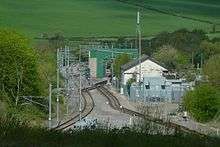Old Dalby Test Track
Old Dalby Test Track | |||||||||||||||||||||||||||||||||||||||||||||||||||||||||||||||||||||||||||||||||||||||||||||||||||||||||||||||||||||||||||||||||||||||||||||||||||||||||||||||||
|---|---|---|---|---|---|---|---|---|---|---|---|---|---|---|---|---|---|---|---|---|---|---|---|---|---|---|---|---|---|---|---|---|---|---|---|---|---|---|---|---|---|---|---|---|---|---|---|---|---|---|---|---|---|---|---|---|---|---|---|---|---|---|---|---|---|---|---|---|---|---|---|---|---|---|---|---|---|---|---|---|---|---|---|---|---|---|---|---|---|---|---|---|---|---|---|---|---|---|---|---|---|---|---|---|---|---|---|---|---|---|---|---|---|---|---|---|---|---|---|---|---|---|---|---|---|---|---|---|---|---|---|---|---|---|---|---|---|---|---|---|---|---|---|---|---|---|---|---|---|---|---|---|---|---|---|---|---|---|---|---|---|
| |||||||||||||||||||||||||||||||||||||||||||||||||||||||||||||||||||||||||||||||||||||||||||||||||||||||||||||||||||||||||||||||||||||||||||||||||||||||||||||||||
The Old Dalby Test Track is a railway in the United Kingdom which is used for testing new designs of trains. It runs between Melton Mowbray, Leicestershire and Edwalton, on the course of the Midland Railway's route between Kettering and Nottingham which closed to passengers on 1 May 1967[1] and to goods in 1968. It is 13.5 miles (21.7 km) in length.
History

The track was set up by British Rail Research Division, which had used it from May 1966.[2] After closure as a through route in 1968, it was converted into a test track for the Advanced Passenger Train APT-E project, re-opening in September 1970.[2] The track saw extensive use in the heyday of the Research Division and was used for pantograph development and OHLE testing.
Following privatisation of Britain's railways, the track became the property of BRB (Residuary) Ltd, the body set up to own former BR assets that were not sold off. The track was leased for one peppercorn per annum to Serco and later to Alstom and Metronet (LUL). Following the abolition of the BRBR, ownership passed to Network Rail on 30 September 2013.[3]
On 17 July 1984 the track was used to test the integrity of flasks used to transport nuclear fuel elements by rail. A Class 46 diesel locomotive (No. 46009), weighing 138 long tons (140 tonnes) and pulling three carriages, was intentionally crashed at about 100 miles per hour (160 km/h) into a pre-arranged, derailed, flask-carrying wagon.[4][5] The behaviour of the flask was monitored in detail and the observations used to validate numerical modelling of flasks subjected to impact loading. A photographic record is available,[6] as well as a video.[7]
Twenty-first century

In 2001 the track was leased to Alstom Transport, which electrified the former Down line at 25 kV AC OHLE to test and commission the Class 390 "Pendolino" trains for Virgin Trains on the West Coast Main Line, and re-instated six miles of the former Up line from Old Dalby to the southern portal of Stanton Tunnel to test and commission the proposed ERTMS system for NR.
When Alstom withdrew from the United Kingdom train-building market, the track was threatened with closure before being leased to Metronet in 2007 to test and commission London Underground S Stock trains being manufactured by Bombardier in Derby. The former Up line was equipped with approximately 4 km (2.5 mi) of London Underground-style conductor rails from Old Dalby (milepost 111) to a point near milepost 114. Testing of 'S' stock began at the end of March 2009. The former Down line retains its 25 kV OHLE.
Serco was awarded the contract to manage the track on behalf of Metronet, giving it the opportunity to attract other users.
In April 2010, the track was used by Class 172 diesel multiple units, also manufactured by Bombardier in Derby.
Network Rail uses the track on an ongoing basis for calibration and testing of measurement and gauging trains.
Plans include the testing the Thales automatic train control system for London Underground, and new mainline infrastructure such as the Series One OCS system by Network Rail.[8]
During mid January 2014, Network Rail applied for changes to the original planning controls to increase train passes on the line substantially during weekdays citing commissioning of the new Hitachi IEP stock based on the Javelin stock on High Speed 1 for the future electrification of the Great Western Main Line, this undoubtedly secures the future of the line's testing capabilities even further.
In December 2017, the local council suggested that the line could be reopened to passengers to allow a direct link between Nottingham and Melton Mowbray, as part of the Government's strategy to open up new areas for housing by recommissioning disused rail lines.[9]
References
- Passengers No More by G.Daniels and L.Dench page 65
- Aldworth, Colin (2012). The Nottingham and Melton Railway 1872 - 2012.
- "The Public Bodies (Abolition of BRB (Residuary) Limited) Order 2013". www.legislation.gov.uk.
- Nigel Tout. "Crash Test Old Dalby". Archived from the original on 28 December 2016.
- Jack Garside (5 November 2014). "Operation Smash Hit". National Railway Museum.
- "Category:Old Dalby nuclear flask rail crash test 1984 - Wikimedia Commons". commons.wikimedia.org.
- "Train test crash 1984 - nuclear flask test" – via www.youtube.com.
- "Archived copy" (PDF). Archived from the original (PDF) on 17 October 2013. Retrieved 17 October 2013.CS1 maint: archived copy as title (link)
- Martin, Dan (10 December 2017). "Passenger services could return to county line 51 years on". leicestermercury.
External links
| Wikimedia Commons has media related to Old Dalby Test Track. |